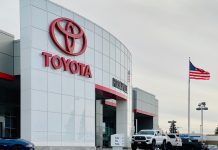The second-quarter car sales reports tell a story that few care to recall. The pandemic response sent more than 45 million Americans into the unemployment line so they could pay their bills. But during this crisis, the wealthy in the United States have continued to thrive and spend their money as usual.
According to a CNBC news article, most wealthy American households have managed to not only avoid the financial downturn during COVID-19 but are continuing to build their savings. It’s largely due to two facts: the stock market rebounded quickly and the housing market did not crash. These to are typical occurrences in a recession that have not played out.
Luxury Car Sales More Stable
Mass-market and premium car brands suffered a similar decrease in business during Q2 2020, mostly because all dealerships were sharing the same lockdown orders for most of the time. On average, sales were down around 30 percent, but some luxury brands fared better than others. Porsche, for example, was down only 20 percent for the same period and the iconic Porsche 911 was up 30 percent year over year. Daimler’s Mercedes-Benz sold 870,000 units worldwide in the first half of 2020.
And the spending trend continues into other areas of specialized automotive as well. Pensacola, Fla.-based Velocity is a high-end restoration and customization facility that specializes in “specializes in classic Ford Bronco, vintage truck, and classic car restorations,” according to their website. Demand for their vehicles and services have been off the charts during the pandemic recovery.
CEO and Owner of Velocity, Brandon Segers, said, “Since the inception of Velocity, May of 2020 was our best month in sales and we recently shattered that month in June with continued interest in buying our Classic Ford Broncos and Scouts. Through the pandemic we have increased our staff and are looking to keep expanding with over 10 more positions by the end of the summer.”
Their vehicles range in price to well over a quarter million dollars, demonstrating that high-end car buyers have not shrunk back into the walls. They’re actively buying.
What It Means for Dealers
Currently, the common perspective for anyone in retail is that people are strapped for cash. That may be true for the bottom 20 percent of earners, but middle- and upper-income earners continue to spend their disposable income. The OECD Better Life Index report shows that the upper 20 percent of earners have an estimated 69,477 USD net-adjusted disposable income annually, six times that of the bottom 20 percent.
Despite a dismal second quarter in auto sales, money continues to flow. Car sales are surging toward normal levels again. And luxury and specialty vehicles are especially desirable for the high-income earners in the nation. Of course, this is also a regional trend.
Dealers should continue to reinforce proper needs analyses by their sales team so well-qualified buyers aren’t turned off by credit applications or presumptive discussions. As well, it makes sense to keep a selection of top trim level models, both new and used, in stock to attract those buyers. While they may not need access to financing, extremely low interest rates could be another carrot to earn your team back-end gross.
Did you enjoy this article from Jason Unrau? Read other articles from him here.
 Be sure to follow us on Facebook and Twitter to stay up to date or catch-up on all of our podcasts on demand.
Be sure to follow us on Facebook and Twitter to stay up to date or catch-up on all of our podcasts on demand.
While you’re here, don’t forget to subscribe to our email newsletter for all the latest auto industry news from CBT News.








